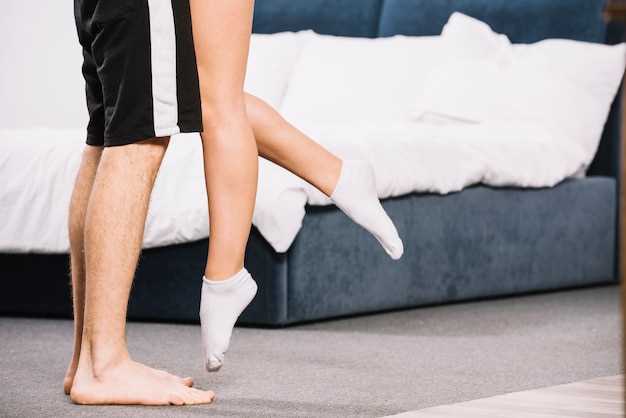
Are you experiencing ankle swelling while taking Losartan? You’re not alone. Many people wonder if Losartan can cause this side effect, and we’re here to provide you with the answers you need. Learn more about the potential connection between Losartan and ankle swelling and how to manage it effectively.
Understanding Ankle Swelling
Ankle swelling, also known as edema, is a common condition where there is an excess of fluid build-up in the ankle area. This can result in the ankles appearing swollen, puffy, or enlarged.
Causes of Ankle Swelling
Ankle swelling can be caused by various factors such as:
- Fluid Retention: When the body holds onto excess fluids, it can lead to swelling in the ankles.
- Injury: Ankle sprains or fractures can cause swelling as a result of inflammation.
- Medical Conditions: Conditions like heart failure, kidney disease, or liver disease can also lead to ankle swelling.
It is important to identify the underlying cause of ankle swelling in order to determine the appropriate treatment.
Losartan and Ankle Swelling

Losartan is a medication commonly used to treat hypertension (high blood pressure) and other conditions such as heart failure. Ankle swelling, also known as edema, is a potential side effect of losartan. While not everyone who takes losartan will experience ankle swelling, it is important to be aware of this potential side effect.
How Losartan Can Cause Ankle Swelling
Losartan is a type of medication known as an angiotensin receptor blocker (ARB). ARBs work by blocking the action of angiotensin, a substance in the body that causes blood vessels to constrict. By blocking the action of angiotensin, losartan helps to relax and widen the blood vessels, which in turn helps to lower blood pressure.
However, one of the side effects of losartan and other ARBs is that they can sometimes cause fluid retention in the body. This fluid retention can lead to swelling in various parts of the body, including the ankles. The swelling is typically painless and may be more noticeable in the evening or after prolonged periods of standing or sitting.
If you are taking losartan and experience ankle swelling, it is important to discuss this with your healthcare provider. Your doctor may recommend adjusting your dosage, switching to a different medication, or taking other steps to help alleviate the swelling.
Managing Ankle Swelling
When experiencing ankle swelling while taking losartan, it is important to consult with a healthcare professional to determine the underlying cause. Here are some general tips for managing ankle swelling:
| 1. Elevate Your Legs: | Elevating your legs above heart level can help reduce swelling by allowing fluids to drain from your legs back into the circulation. |
| 2. Compression Therapy: | Compression stockings or wraps can help reduce swelling by applying pressure to the area and preventing fluid buildup. |
| 3. Limit Sodium Intake: | Reducing your sodium intake can help prevent water retention and reduce swelling in the extremities. |
| 4. Stay Hydrated: | Drinking plenty of water can help flush excess sodium and fluids from your body, reducing swelling. |
Remember, it is crucial to consult with your healthcare provider before making any significant changes to your treatment plan or lifestyle to address ankle swelling.
Managing Ankle Swelling
Managing ankle swelling caused by losartan involves several steps to help alleviate the discomfort and reduce the swelling. Here are some tips:
1. Monitor Your Fluid Intake

Drink plenty of water to help flush out excess sodium and fluids from your body, which can contribute to swelling. Limit your intake of salty foods that can worsen fluid retention.
2. Elevate Your Legs
Rest with your legs elevated above the level of your heart to promote better circulation and reduce swelling. Use pillows or a footstool to elevate your legs while sitting or lying down.
3. Wear Compression Stockings
Compression stockings help improve blood flow in your legs and reduce swelling. Wear them during the day to provide support and compression to your ankles.
4. Stay Active
Regular exercise can help promote circulation and reduce swelling. Engage in light activities like walking or swimming to improve blood flow and prevent fluid retention in your ankles.
Consulting a Healthcare Professional
If you experience ankle swelling while taking losartan, it is important to consult a healthcare professional to determine the underlying cause. Your doctor can assess your medical history, conduct a physical examination, and may order further tests to identify any potential issues.
During your consultation, be sure to provide detailed information about your symptoms, including the timing and severity of the ankle swelling. It is essential to discuss any other medications you are taking, as well as any pre-existing medical conditions that may contribute to the swelling.
- Your healthcare provider may adjust your losartan dosage, switch to a different medication, or prescribe additional treatment to help alleviate the ankle swelling.
- Follow your doctor’s recommendations closely and attend follow-up appointments as scheduled to monitor your condition.
Remember that consulting a healthcare professional is crucial for proper evaluation and management of ankle swelling associated with losartan. Your doctor can provide personalized guidance and support to address your specific health needs.
